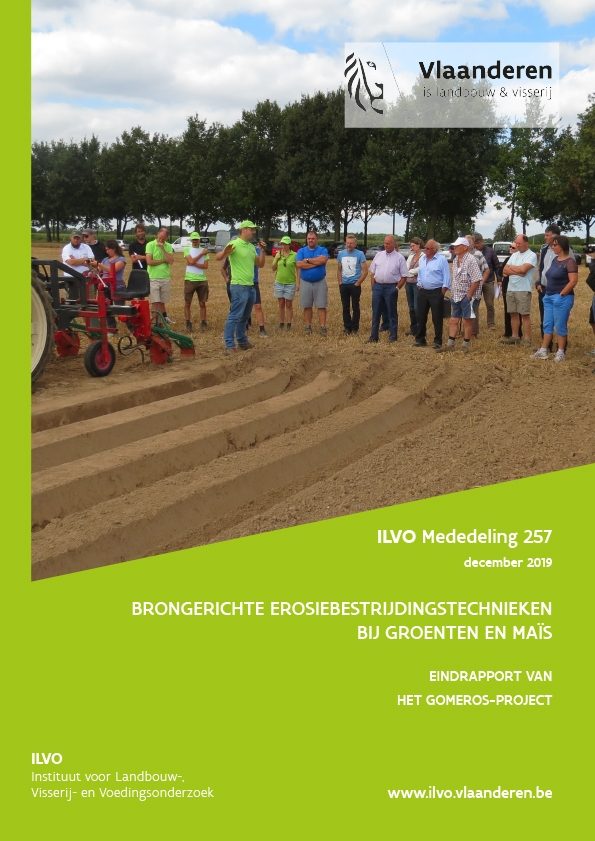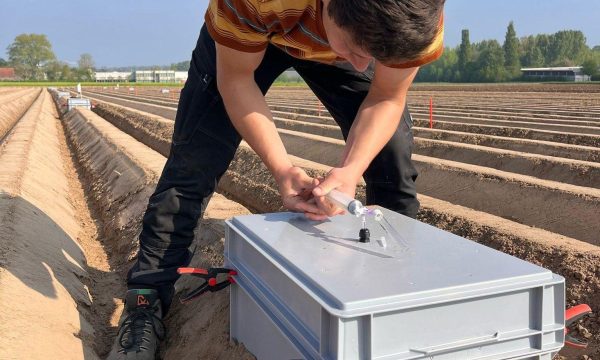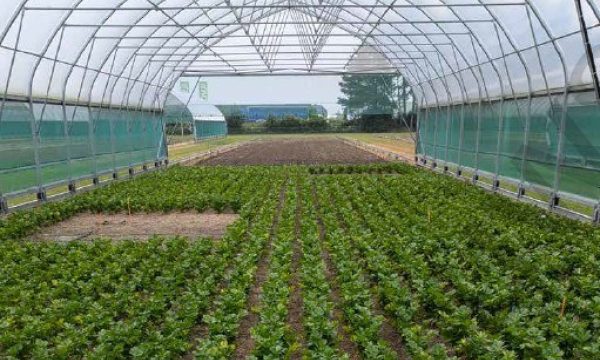Publication | Statement Source directed erosion control techniques in vegetables and maize - final report

Approach of the GOMEROS project
Reducing soil erosion on highly erodible plots (erosion class purple and red), is one of the preconditions imposed on farmers for obtaining direct income support under the Common Agricultural Policy (CAP). In 2016, these cross-compliance requirements became more stringent. Since then, farmers have to choose measures from the basic package (including green cover crops), the buffer strips package, the cultivation measures package and the erosion control works package (including erosion ponds). The number of measures and packages that can/must be chosen from depends on the erosion susceptibility of the plot and the crop. Cultivation measures, including non-return tillage, strip-till, and thresholds in ridge crops, are source-oriented erosion control measures because they prevent water and sediment from running off. Some of these measures had not been sufficiently tested in 2016 in certain crops or their practicality was strongly questioned. The GOMEROS project focused on corn and vegetable crops on purple and red plots; the acronym therefore stands for GrOenten and Maize on EROSie susceptible plots. The objective of the project was to perfect techniques to effectively combat erosion at the source while maintaining crop yield and quality. The GOMEROS project is a VLAIO Agriculture project that ran from 2015 to 2019 and was implemented by ILVO, PCG and Inagro. In addition to the financial support from VLAIO, the project also received support from Boerenbond, ABS, Vegebe, Ingro, B.N.D, Vegras, Steeno and Packo.
(Report in Dutch:) ILVO mededeling 257: Brongerichte erosiebestrijdingstechnieken bij groenten en maïs
Source directed erosion control techniques in vegetables and maize
(Report in Dutch:) ILVO mededeling 257: Brongerichte erosiebestrijdingstechnieken bij groenten en maïs


